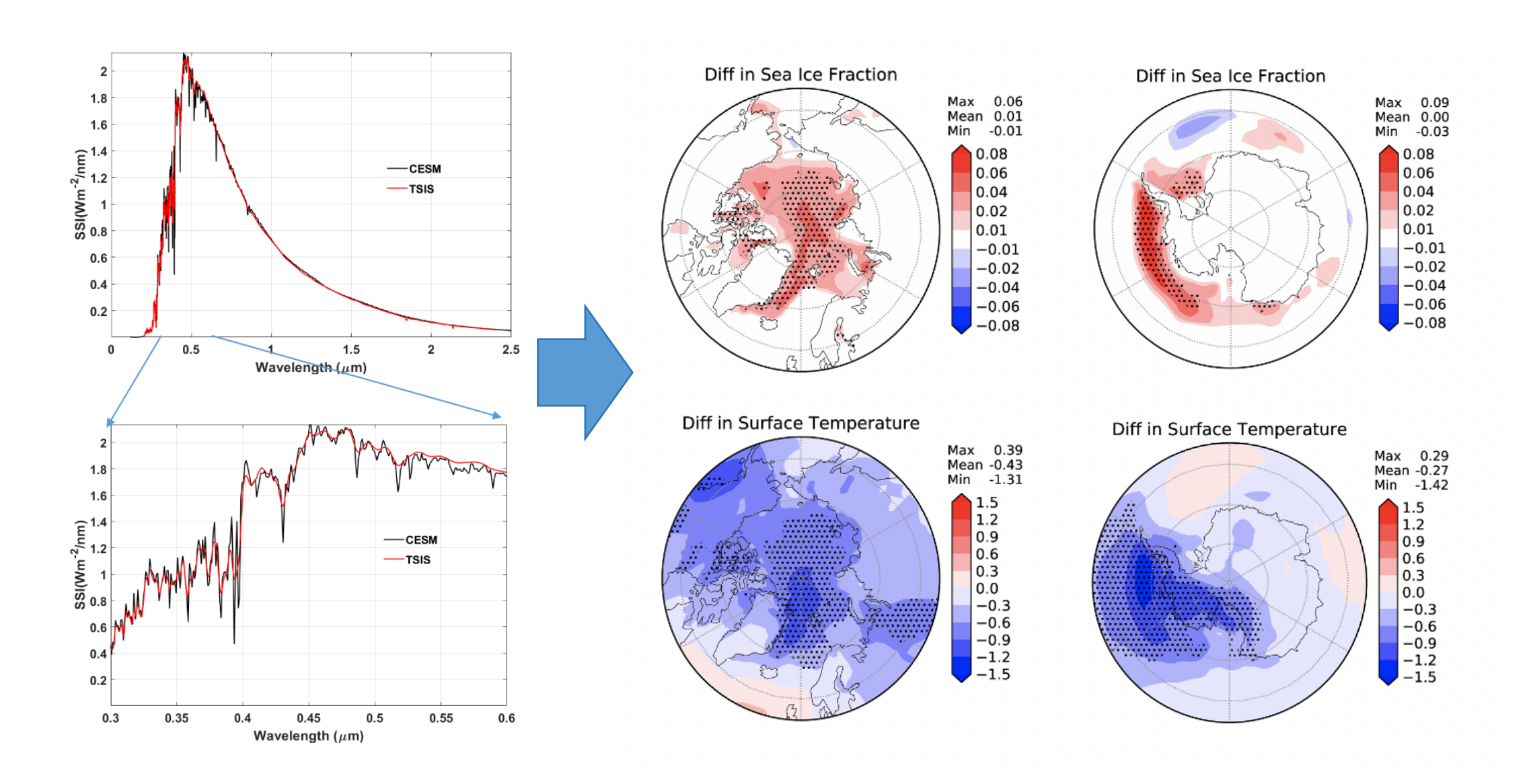Solar spectrum’s importance to climate modeling
Not only total solar irradiance (TSI) but also spectral solar irradiance (SSI) matter for our climate. Different surfaces can have different reflectivity for the visible (VIS) and near-infrared (NIR). The recent NASA Total and Spectral Solar Irradiance Sensor (TSIS-1) mission has provided more accurate SSI observations than before. The TSI observed by TSIS-1 differs from the counterpart used by climate models by no more than 1 Wm−2. However, the SSI difference in a given VIS and NIR band can be as large as 4 Wm−2 with opposite signs. Due to different VIS-NIR spectral reflectance contrasts between icy (or snowy) surfaces and open water, climate model simulations show that assigning more irradiance in the VIS, and less in the NIR, leads to less solar absorption by the high-latitude surfaces, ending up with colder polar surface temperature and larger sea ice coverage. The difference is more prominent over the Antarctic than over the Arctic. Our results suggest that, even for the identical TSI, the surface albedo feedback can be triggered by different SSI partition between the VIS and NIR. The results underscore the importance of continuously monitoring SSI and the use of correct SSI in climate simulations. 
